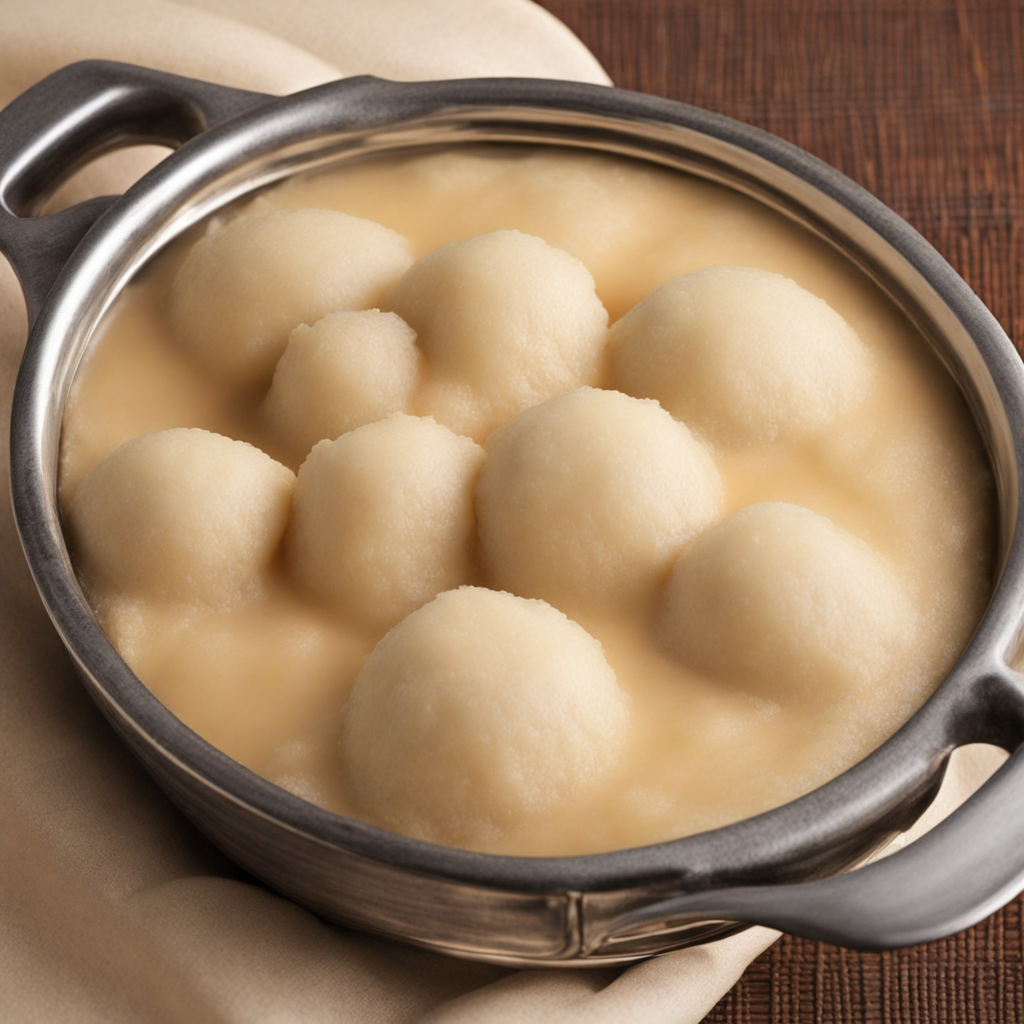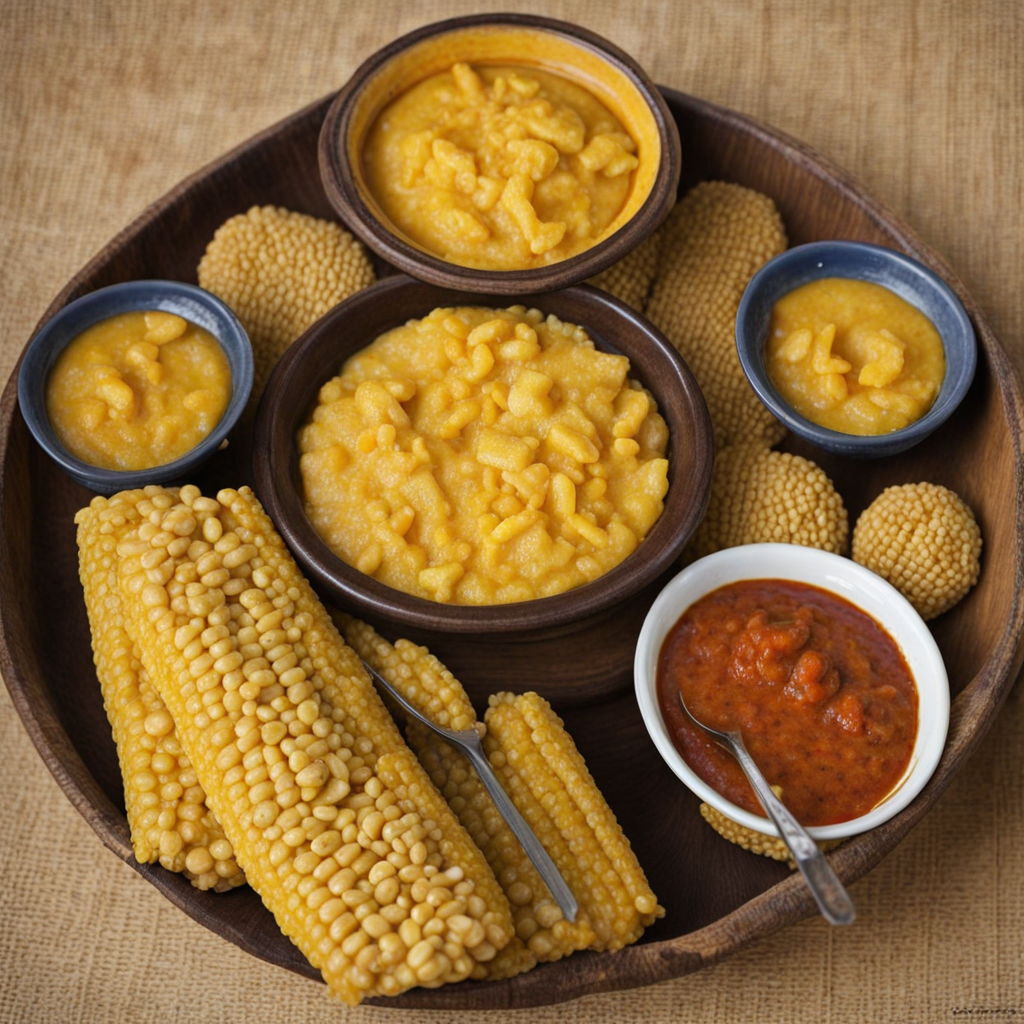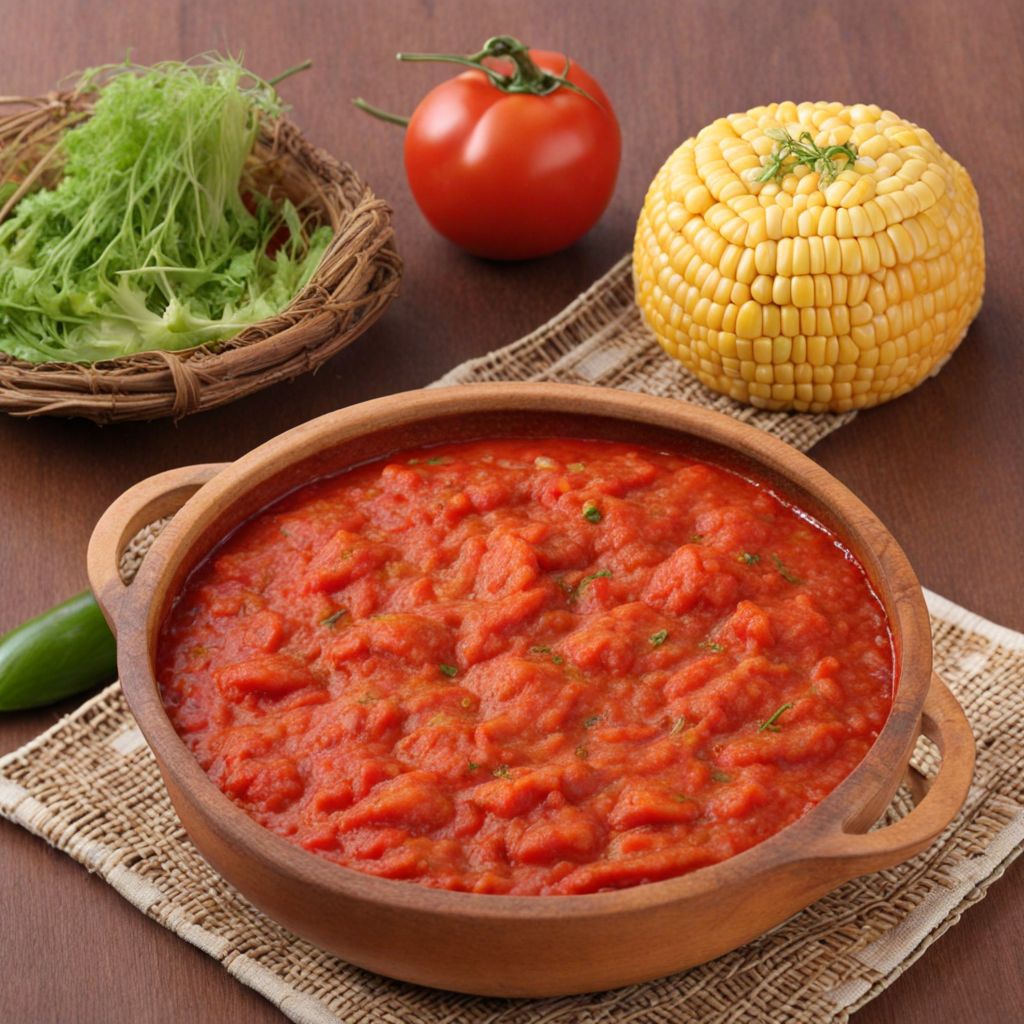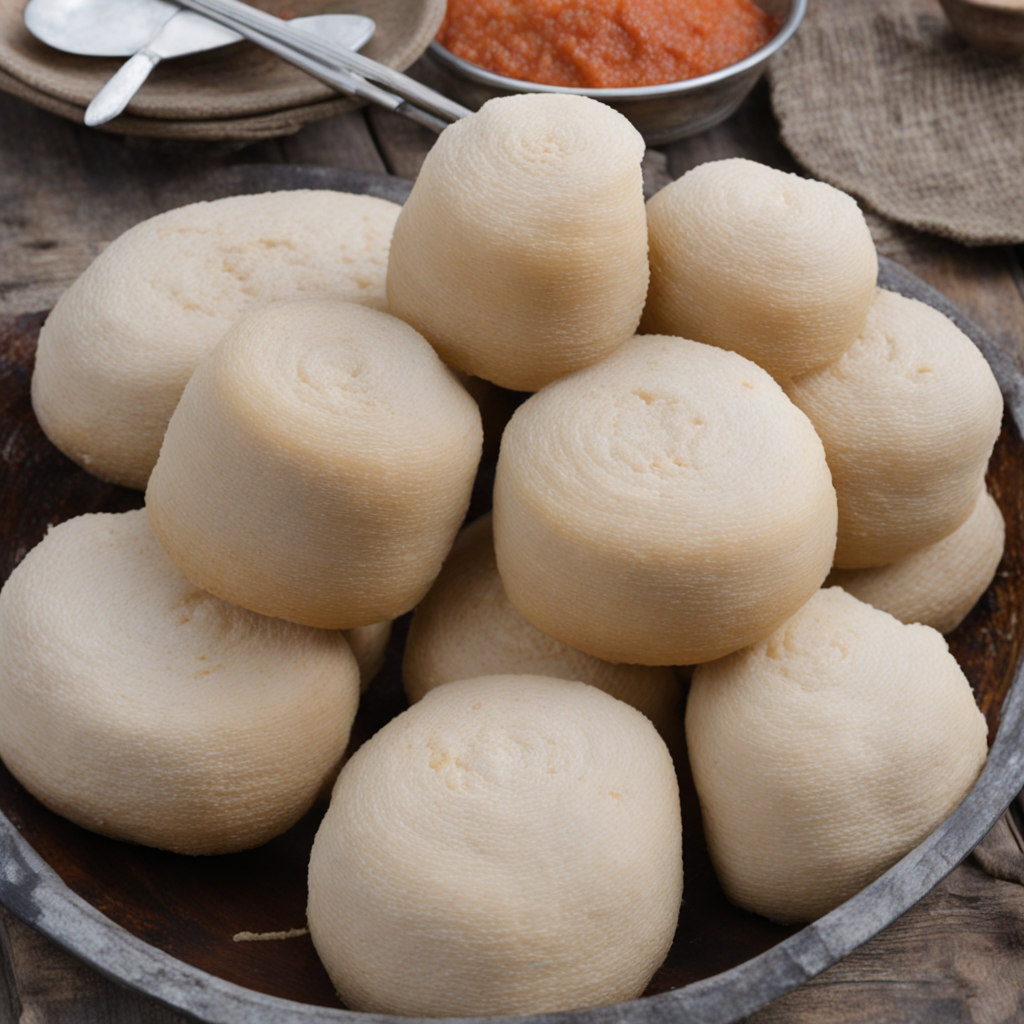Fufu
Fufu is a versatile and beloved staple food in Benin, often made from starchy ingredients such as cassava, yams, or plantains. The preparation typically involves boiling these ingredients until soft, then pounding them into a smooth, stretchy dough-like consistency. This labor-intensive process not only creates a texture that is both chewy and comforting but also allows the fufu to absorb the flavors of accompanying dishes, making it a perfect base for various stews and soups. Its neutral taste enhances the overall dining experience, allowing the vibrant flavors of the sauces to shine through. In Benin, fufu is traditionally served in balls or scoops and eaten by hand, encouraging communal dining. Diners often dip pieces of fufu into rich and aromatic sauces, which may include ingredients such as peanut, tomato, or spicy pepper, adding layers of flavor and depth to each bite. The act of tearing off pieces of fufu and savoring them alongside flavorful accompaniments creates a sense of togetherness, making meals a social experience. The dish is commonly featured in celebratory gatherings, symbolizing hospitality and unity among family and friends. As you explore the taste of fufu, you'll notice its unique ability to complement a wide variety of dishes, from hearty meat stews to vegetarian options. The subtle yet satisfying texture of fufu makes it a delightful contrast to the often bold and spicy flavors of Beninese cuisine. Whether enjoyed as a daily meal or during special occasions, fufu is more than just food; it represents the rich cultural heritage of Benin and the warm, inviting spirit of its people.
How It Became This Dish
The History of Fufu in Benin: Origins, Cultural Significance, and Development #### Origins Fufu is a staple food found across many countries in West and Central Africa, but its roots are particularly strong in Benin, where it has been an integral part of the culinary landscape for centuries. The origin of fufu can be traced back to the traditions of the Akan people, who inhabited regions that are now part of Ghana and Ivory Coast. Fufu is traditionally made from starchy foods such as cassava, yams, or plantains, which are boiled, pounded, and shaped into a soft, dough-like consistency. In Benin, the preparation of fufu varies by region, reflecting the local agricultural practices and available ingredients. In coastal areas, cassava is popular due to its abundance, while in the northern regions, maize and yam are often used. The process of making fufu involves a communal effort, which not only fosters social ties but also reflects the importance of collaboration in Beninese culture. #### Cultural Significance Fufu holds immense cultural significance in Benin and serves as more than just a food item. It is deeply intertwined with the social fabric of the community. Traditionally, it is served as an accompaniment to a variety of soups and stews, particularly those rich in flavors and spices, such as the famous "soup de poisson" or fish soup, and "sauce d’arachide," a peanut sauce often made with vegetables and meats. The act of sharing a meal that includes fufu is a symbol of hospitality and community. During celebrations, family gatherings, and religious ceremonies, fufu is often the centerpiece of the meal, signifying unity and togetherness. It is not uncommon for people to eat fufu communally, using their hands to tear off a piece and scoop up accompanying sauces. This practice highlights the social aspect of dining in Benin, where food serves as a bridge between individuals and communities. Fufu also carries spiritual significance; it is often included in rituals and ceremonies. In some cultures, it is offered to ancestors as a sign of respect and remembrance. The preparation and consumption of fufu are thus embedded with cultural meanings that emphasize respect for tradition and the importance of family lineage. #### Development Over Time The historical journey of fufu in Benin reflects broader social, economic, and agricultural changes. The introduction of cassava as a staple crop in the 16th century transformed the culinary landscape of the region. Originally from South America, cassava was brought to Africa by Portuguese traders and quickly adapted to local agricultural systems. Its resilience and ability to thrive in poor soils made it an ideal crop, eventually becoming a primary ingredient in the making of fufu. As Benin and its neighboring regions underwent various socio-political changes, the culinary practices surrounding fufu also evolved. The impact of colonization in the 19th century introduced new agricultural practices and ingredients, further diversifying the types of fufu and its accompaniments. While traditional recipes remained, the incorporation of elements from other cuisines led to a richer culinary tapestry. In contemporary Benin, fufu continues to be a beloved dish, but modern influences have also reshaped its preparation and consumption. Urbanization has led to the commercialization of fufu, with pre-packaged versions becoming increasingly available in markets. While this convenience appeals to the fast-paced lifestyles of urban dwellers, traditional methods of preparation still persist in rural areas and among families who prioritize traditional cooking methods. Moreover, globalization has introduced new culinary trends that influence the way fufu is perceived and consumed. Chefs and food enthusiasts are experimenting with fufu, incorporating it into fusion dishes that blend traditional flavors with contemporary culinary techniques. This evolution is a testament to the adaptability of fufu, as it continues to resonate with both the older generations who uphold tradition and younger generations who are seeking innovation. The introduction of fufu into international cuisine has also contributed to its development. As the African diaspora expands, dishes like fufu are being embraced in various parts of the world, leading to a greater appreciation for Beninese culinary traditions. Restaurants specializing in West African cuisine have emerged in major cities, showcasing fufu alongside other traditional dishes, and introducing it to a broader audience. #### Conclusion Fufu is more than just a dish; it is a cultural symbol that encapsulates the history, values, and social practices of the people of Benin. Its origins in the communal practices of food preparation and sharing highlight the importance of community and togetherness in Beninese society. Over time, fufu has adapted to changing agricultural practices, socio-political contexts, and global influences while retaining its essence as a beloved staple food. As we look to the future, fufu is likely to continue evolving, reflecting the dynamic nature of culture and cuisine. Whether enjoyed in a traditional setting or reimagined in a modern culinary context, fufu remains a vital part of the identity of the people of Benin, a delicious testament to the resilience and richness of their cultural heritage.
You may like
Discover local flavors from Benin







